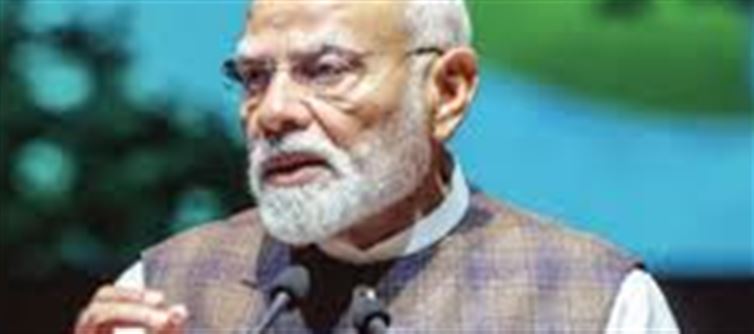
Prime minister Narendra Modi has announced sweeping Goods and services Tax (GST) reforms, calling them a “double dhamaka of happiness” ahead of the festive season. With simplified tax structures and bold changes, the government aims to strengthen the economy while making life easier for common citizens. Let’s break down the highlights of PM Modi’s address.
Festive gift for Citizens
The prime minister emphasized that the new GST reforms, effective September 22 (Navratri’s first day), are a festive gift to the nation. Coming before Diwali and Chhath Puja, the announcement carries symbolic weight, signaling relief for households and businesses alike.
Five ‘Gems’ of the Economy
PM Modi described the reforms as five gems, each designed to transform India’s economic landscape:
Simplified Tax System – Fewer slabs and clearer structures.
Better Quality of Life – More savings in the hands of citizens.
Boost to Consumption & Growth – Increased spending will fuel demand.
Ease of Doing Business – Investments and job creation to rise.
Strengthened Federalism – Better Centre–State cooperation on fiscal policy.
Two-Tier Tax Structure
The revamped GST introduces a two-slab structure for most goods and services:
- 5% for essential and mass-use items.
- 18% for standard consumption goods.
Meanwhile, sin goods such as tobacco and liquor will attract 40% GST, maintaining a balance between affordability and social responsibility.
Link to Income Tax Relief
PM Modi linked the GST reforms to earlier measures, reminding citizens of the 2025 Budget’s income tax relief, where incomes up to ₹12 lakh were exempted. Together, these steps aim to reduce the burden on the middle class, empowering families to spend and save more.
Boost for Swadeshi & local Industries
The PM stressed that the simplified GST will strengthen local industries, promote ‘Vocal for Local’, and enhance the Swadeshi movement. Reduced tax complexities will encourage small and medium businesses to thrive, especially during the festive season when demand peaks.
A Call to teachers & Students
Addressing the National Teachers’ Award ceremony, PM Modi urged educators and youth to spread awareness about the new tax system. He framed GST reforms not just as an economic move but as a national movement, where every citizen plays a role in India’s growth journey.
Sharp Criticism of congress Era Taxes
Taking a dig at the opposition, PM Modi recalled the Congress regime’s heavy taxation, stating:
“Even Congressmen children’s toffees were taxed at 21%.”
He highlighted how under previous governments, citizens could have ended up paying ₹20–25 in taxes for every ₹100 purchase. In contrast, the present reforms aim to maximize savings and ease the lives of common people.
Ban on Online Gambling: Safeguarding Youth
PM Modi also referred to the recent law banning online betting and gambling, calling it a necessary step to protect the youth. He clarified:
- Gaming is not bad—India can dominate global online gaming.
- Gambling is harmful—it risks the future of young people.
This, he said, was another reform in sync with India’s next-gen aspirations.
A Step Towards Atmanirbhar Bharat
Summing up, PM Modi declared the GST reforms as a path to self-reliance and global leadership. By making taxation simpler, fairer, and more growth-oriented, india is set to shine brighter in the global economy.
With the GST revamp, income tax relief, and a push against harmful practices, the government has indeed delivered what the PM calls a “double dhamaka of happiness”—right in time for the festive season.
Disclaimer:
The views and opinions expressed in this article are those of the author and do not necessarily reflect the official policy or position of any agency, organization, employer, or company. All information provided is for general informational purposes only. While every effort has been made to ensure accuracy, we make no representations or warranties of any kind, express or implied, about the completeness, reliability, or suitability of the information contained herein. Readers are advised to verify facts and seek professional advice where necessary. Any reliance placed on such information is strictly at the reader’s own risk.
.jpg)




 click and follow Indiaherald WhatsApp channel
click and follow Indiaherald WhatsApp channel